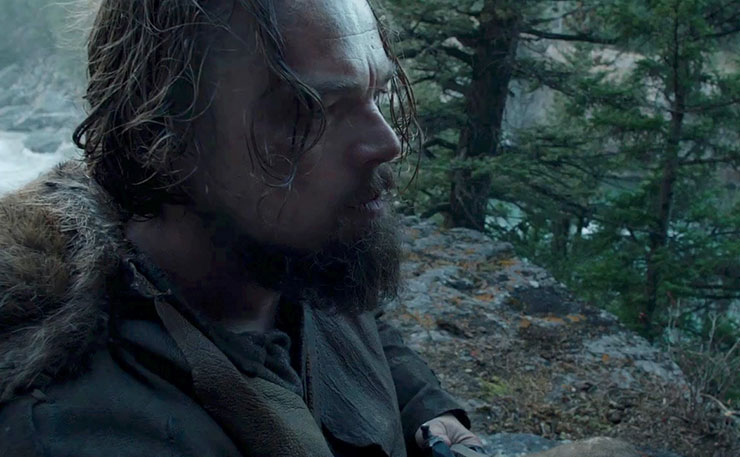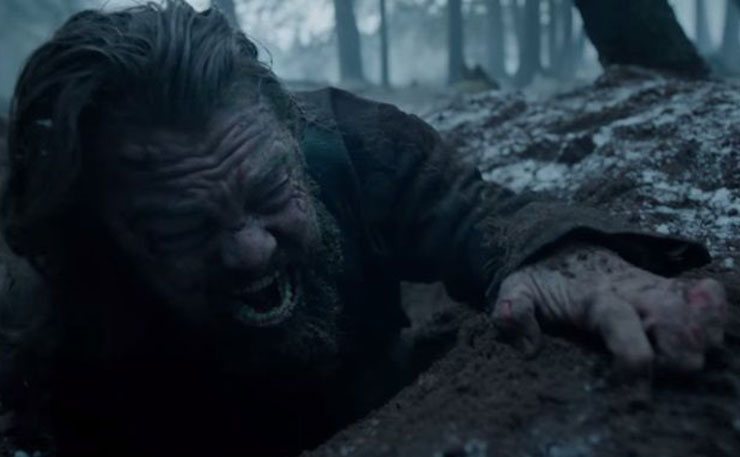Supposed best picture and best actor. Golden Globe winner. Twelve Academy award nominations. The Hollywood hullaballoo urges millions that they can’t afford to miss the experience of seeing The Revenant.
The publicity is a dangerous fraud, the latest example of larger than life exaggeration nurtured by a belief that the public has an insatiable appetite for brutal masculinity and gratuitous violence.
The film fails on four counts.
Although based on an alleged real life story, the film version is not plausible.
To achieve interest and effect, the main diet is violence.
Some commentators have even claimed, falsely, that the film depicts understanding of white settler-Indigenous Indian relationships.
My fourth point concerns the casting of Leonardo DiCaprio. Not too bothered about historical accuracy, the film looks more like a vehicle for ensuring that the famous American would receive nominations for best actor of 2016.
Although based on the story of the intrepid 1820’s frontiersman Hugh Glass, who was mauled by a bear and survived, the film’s reconstruction of his adventures is preoccupied with producing an American hero painted in values of stamina, courage, fearlessness and blood lust. The film version is largely unbelievable.
If anyone had sustained massive injuries and huge loss of blood after a grizzly mauling in winter, and in lands where no help was available, they would have died. Not so this revenant. Soon after the massive injuries, he is swept away in an ice cold river, down life crushing waterfalls and is washed up on a shore where he blows his hands to keep warm.

Soon after the icy waterfall incidents, the hero disembowels a horse, strips naked and to avoid the intense cold crawls inside the horse. Really?
Of Hugh Glass’s, (Leonardo DiCaprio’s) immersion in icy waters, experts would say that survival would be limited to a few minutes. Not so our hero. Reality is in no-one’s interests. Amazing white American conquering all is the box office attraction.
There is no doubt about the violence on the American wild west frontier and numerous other frontiers where Indigenous people were slaughtered in their millions. But the unending Revenant violence overshadows any attempt to provide space for non-violence.
Such values have no place in a Hollywood which promotes kill or be killed messages: how the west was won, how a determined American defies death and conquers all.
I should not be surprised. The film’s Mexican Director, Alejandro Gonzalez Inarritu had made previous films, Amores Perros, 21 Grams and Babel, often referred to as the Trilogy of Death.
The film’s final scene, when the hero catches up with the villain who abandoned him in the woods, reveals the fascination with violence. Struggling and stabbing followed by blood oozing and a fatal shooting are portrayed as though these had to be the story’s final chords.
In this climax, implausibility feeds violence, or vice versa? The hero is stabbed repeatedly in hands which appear more mangled than after the grizzly mauling, yet he manages to pulls his pistol, shoot the villain, blood stains the snow, the adjacent river washes the dead man away. A stunned audience can leave the cinema, at least those who stayed to the end.
There’s a chance that the bravery of Hugh Glass included subtlety and sensitivity in relation to native Indians. That picture does not emerge. Yet a question needed to be asked: unless they experienced some reciprocity with native people, would the adventures of Glass and his fellow trappers have been possible?
It is acknowledged that some Indian tribes were more hostile than others but even this insight slips by in the focus on the gargantuan efforts of the Glass character to survive the mauling, escape the drowning, and emerge from being buried alive and left for dead by his fellow trappers.

That native peoples helped frontiersmen to learn about nature’s dangers and benevolence might have been experienced by Hugh Glass, but that lesson had no place in the values promoted in The Revenant.
As I left the cinema, the proprietor exclaimed ‘Awesome.’ I responded. ‘So awesome that people left halfway.’ (I spoke to some women who left. They were disgusted by the violence.). ‘Awesome’, he repeated. ‘What’s awesome about a film which looked like a vehicle for DiCaprio’s ego?’
His ego is central. Without it the story could not have been glued, at least that’s what the Director seems to have had in mind.
The glorification of this one person, one actor, one unbelievable hero is akin to stuffing on a favourite food to the point of nausea. Where was the space for a glimmer of humility, even a touch of humour. Instead DiCaprio grimaces against appalling odds and a few months later replaces the grimaces with endless smiles at the nominations arrive for The Revenant as best film and best actor.
In response to my reaction to this film I’ve been told, ‘You’re either squeamish or naïve. Hollywood portrayals of the wild west have always been like this. Unashamed violence is nothing new.’
What is new is that this is the beginning of a violent 2016. It may not be fair comment to link one blockbuster movie to world-wide kidnappings, shootings, bombings and beheadings, so my reactions would be best confined to the American context.
What is new is that the US Centre for Disease Control and Prevention has reported that in America in 2014, 2,575 children and teenagers were killed by gunfire – that is one child or teen death every 3 hours and 28 minutes, nearly 7 a day, 48 a week.
Young Americans die but the gun culture is alive and well.
The Revenant arrives at a time when Republican candidates for the Presidency argue that the defence of American freedom depends on reciting the Second Amendment to the Constitution, which encourages US citizens to believe that in the traditions of their predecessors – Hugh Glass? – they have an entitlement to own and use a gun.
The hype about The Revenant coincides with President Obama breaking down in his State of the Union message when reflecting on the hundreds of innocent lives lost by gun fire, his sadness compounded by a Congress which promotes the ideology that only the widespread possession and use of weapons that kill will limit the killing. Really?
In these scenarios, guns and an insane culture of violence are encouraged by a Hollywood production which may impress on account of compelling close ups and spectacular scenery, but don’t be deceived. The clever cinematography is camouflage for a production which emphasizes good people versus bad and promotes that familiar philosophy – the survival of the fittest.
There’s one more implausibility to cope with. A film is being lauded and rewarded which gives more support to violence and death than to any of those touches of civility which sustain life.
Donate To New Matilda
New Matilda is a small, independent media outlet. We survive through reader contributions, and never losing a lawsuit. If you got something from this article, giving something back helps us to continue speaking truth to power. Every little bit counts.





